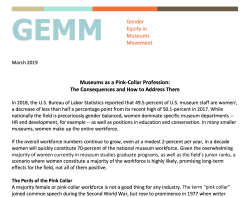Why Creativity AND Leadership Matter
Posted: March 2, 2014 Filed under: History Museums, Idea flow, Leadership Development, Learning Organizations | Tags: Alex Pentland, Austin Kleon, Leadership Matters Leave a commentThe collective intelligence of a community comes from idea flow; we learn from the ideas that surround us, and others learn from us. Over time, a community with members who actively engage with each other creates a group with shared, integrated habits and beliefs. Idea flow depends upon social learning, and indeed, this is the basis of social physics: Our behavior can be predicted from our exposure to the example behaviors of other people.
Alex Pentland writing in Wired, February 7, 2014
As Austin Kleon suggests in his wonderful little book, Steal Like an Artist, you’re only going to be as good as the people you surround yourself with. He goes on to remind you that means not just in real life, but in your digital life too, suggesting that following the smartest bloggers and writers on the Internet will make you smarter. And it will. A little like when your parents said that reading cheesy magazines would rot your brain. He closes by suggesting that “If you ever find you’re the most talented person in the room, you need to find another room.” The point of all this is that history organizations–whether the teeniest, tiniest local history organization or the biggest state historical society–need to surround themselves with smart, creative people. And they need to ramp up the idea flow that Wired‘s Alex Pentland mentions above in the opening quote. In our experience, too many leaders get mired in process and skip the idea flow.
While there are many creative leaders among the individuals we interviewed for Leadership Matters, there are a few we identified as “Visionary.” They are the type of leaders who not only see possibilities, but articulate them in such real and compelling terms–called “visual postcards” by the Heath brothers– that their followers see them too. In short, they are comfortable with idea flow. Pentland describes these leaders as explorers, people who search for what’s new rather than what’s best.
We begin Leadership Matters with 10 Simple Myths and end it with 10 Simple Truths. Two of the Truths are pertinent to this discussion. The first is “Get Integrated.” By that we meant integrating ideas, information and standards from diverse places to leap frog your museum forward. We might add that while you’re leaping cross-culturally, you need to remember to pause long enough to let people–staff, trustees, volunteers–bounce ideas off one another. You can’t do that if you’re convinced a successful meeting is one where discussion is squashed in aid of moving the agenda forward. Focus discussion on a concept and idea and rescue it from minutiae.
The second simple truth is “Tap Your Entire Network,” meaning that leadership isn’t about the guy at the front of the room, but about everyone else, too. Good leadership demands collaboration, and that’s when invention and creativity happen or to quote Kleon again, “Our failure to copy our heroes is where we discover where our own thing lives.” Leaders who open themselves and their institutions to new possibilities, discover what they have never seen before.
So going forward, how might 21st-century history museum and historic house museum leaders change? First, commit to leadership development, for everyone, from board members to shop manager to curators. Second, make space in meetings for ideas to grow. For ideas we recommend Creativity in Museum Practice’s: develop risk taking; build learning cohorts; encourage learning from failure; and last advocate for prototyping spaces. Remember, it isn’t about getting it perfect, it’s about getting it right.
How do you keep ideas moving?










